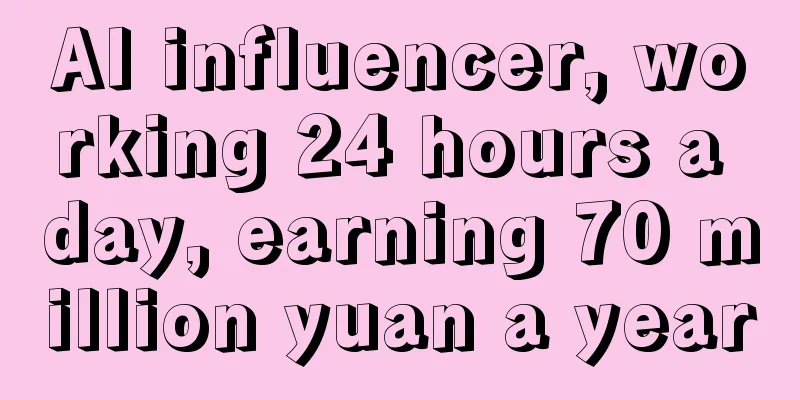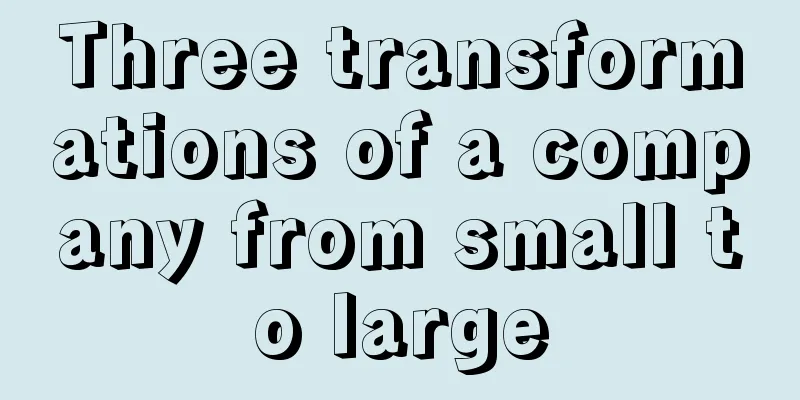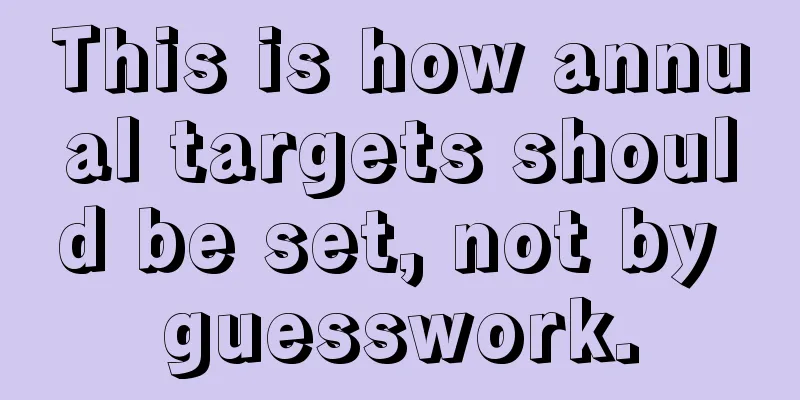AI influencer, working 24 hours a day, earning 70 million yuan a year

Today I will show you the perpetual motion machine of the new era - AI internet celebrity. They never get tired, their work never fails, and they can create cash flow 24 hours a day, making them the perfect "workers" in the eyes of capitalists. While everyone is still trying to figure out the right way to make money with AI, AI influencers have taken the lead in finding their own niche: From the top luxury endorsement with an annual income of tens of millions of dollars, to the AI avatar chat on OnlyFans, to the AI cat and dog blogger on Xiaohongshu who relies on "cloud pet raising" to win orders from brands... Levelsio, a Silicon Valley geek who has developed more than 70 products, said, "AI influencers are now rapidly becoming a big business." It is estimated that the market size of AI influencers will reach 45 billion US dollars by 2030. This is almost twice the current influencer market. Dear workers, please fasten your seat belts. Today we are going to dissect this cyber wonder: a group of electronic life forms that cannot breathe are reconstructing the definition of "labor" with code. 01 From fashion blogger to AI clone, unlock the AI influencer’s money-making methodWhile most AI startups are still exploring their business models, AI influencers have already adopted a variety of monetization methods: brand endorsements and collaborations, emotional economy and subscription services, as well as digital asset derivatives and more. Next, let’s follow Crow and take a look. 1. Fashion and beauty bloggers: highest annual income: $10 millionIn the field of AI influencers, the biggest name is Lil Miquela, who debuted in 2016. Now, Miquela has more than 7 million fans across the entire network. Miquela mainly makes money by taking advertisements, and her partners are all big brands, including Samsung, Dior, Chane, Prada and CK. Last year, she even used CGI (computer graphics) + AI dynamic video in an advertisement in cooperation with BMW. With the support of big brands, Miquela's annual income has now reached 10 million US dollars. With the success of Miquela, many AI influencers have emerged in various places: For example, Aitana, a Spanish AI influencer, has more than 121,000 followers on Instagram, and each of her photos has thousands of views. ▲Spanish AI influencer Atiana Compared to human influencers, the biggest advantage of AI influencers is that they are available 24 hours a day. You can often see this picture on Aitana: At 12 o'clock late in the night, Aitana posted a selfie backstage at the Balenciaga show on Instagram; 3 hours later, she "appeared" on the streets of Shibuya, Tokyo, to check in at a popular ramen restaurant; the next morning, the pink curly-haired girl wore a new Zara dress and pushed a breakfast vlog to her 300,000 fans. This is not a science fiction movie about teleportation, but the daily life of "digital life" created by The Clueless using real-life shooting + AI face-changing + script algorithm. Aitana's income is also considerable. Now, Aitana can earn more than 1,000 euros for each advertisement she shoots, and her monthly income can reach up to 10,000 euros (about 80,000 yuan). In Japan, there is also an AI influencer named Lmma. Lmma follows the same path as Miquela: the same short hair with side parts and fair and smooth skin texture. With such a unique image, Lmma has become a long-term partner of Shiseido and Uniqlo. ▲Lilmiquela and Lmma, a photo of two AI influencers There is also Shudu, the world's first black AI supermodel. With her black identity, she has become the virtual ambassador of a number of perfume and baby brands. ▲AI black supermodel Shudu Unlike other AI influencers, Shudu takes a cool approach and rarely posts photos other than "work photos." In terms of price, Shudu can earn $2,000 for each sponsored post, and his annual income is estimated to be about $5 million. Of course, AI influencers don’t make money entirely through advertising, they even sell digital assets. For example, Noonoouri, an AI fashion model from Germany, has started selling virtual digital assets. ▲The limited edition digital handbag launched by Noonoouri in collaboration with Dior The limited edition digital handbags launched by her cartoon character in collaboration with Dior were quickly sold out on the Metaverse platform. Today, Noonoouri's annual income has reached $500,000, of which 60% comes from virtual asset trading. 2. AI clones: NSFW, earning tens of millions of dollars a monthWho would be a serious person and create a virtual idol? Those who are really good at it are all doing cyber-style services. In the United States, Caryn Marjorie, the queen of borderline chats with 2.6 million fans, used GPT-4 to set up an AI avatar to chat on her behalf, charging $1 per minute, which is dozens of times more expensive than making an international long-distance call. She can earn 500,000 RMB in just one week. Although she later closed this clone, it undoubtedly opened the door to a new world. OnlyFans, Fanvue and other platforms have also launched "special subscriptions" for AI characters. It is said that the "Internet porn" on OnlyFans can earn $10 million per month through AI avatars, and the annual income exceeds $100 million. The charging method for AI chat agents is also very conscientious, with a commission of 20% based on the number of orders. 3. AI cute pets: Taking advantage of video models, the price of a business order exceeds 10,000In addition to virtual characters, the AI influencer trend has also spread to cats and dogs. Xiaohongshu's AI orange cat "Orange's Orange" is known as the king of working cats. It relies on virtual plots such as Spring Festival travel ticket grabbing and palace fighting in the workplace, and the price of a single note is 15,000. The approach of "Orange's Orange" is not complicated. It transforms ordinary orange cats, British shorthair cats, etc. into anthropomorphic characters with rich emotions and social roles, and uses AI technology to generate graphic and text content to allow these cats to play important roles in life, work and even social hot events. So far, this account has accumulated 60,000 followers on Xiaohongshu and received 540,000 likes and collections. In addition to gaining a large number of accurate fans, the creator Hai was interviewed by China Daily to share his experience in creating AIGC cats. There are similar trends abroad, and the AI dog on YouTube is even more outrageous. The revenue from shooting short video ads with plots can reach up to $500,000. 02 The industrial revolution of face-pinching, AI influencers enter the era of mass productionThe development of AI influencers is actually a history of the advancement of AI technology. The earliest Miquela integrated a lot of AI technologies. For example, Miquela's developer Brud used programming combined with machine learning to provide Miquela with background information and help her evolve. They rely on generative adversarial networks (GANs) and other models to generate realistic data for her visual content and social media interactions. Brud once said that the more memories you give her, the more complex she will become. This is actually very similar to today's AI. In terms of narrative, Migyela has broken through the traditional static image method. Through the integration of AI, 3D rendering and motion capture technology, Miquela has been given a human-like appearance. Through AI-driven interactions, such as interviewing some musicians and interacting with fans, she becomes more realistic and seems more like a real person. From the example of Migyela, we can see that AI influencers are combining cutting-edge technologies such as machine learning, computer vision and natural language processing to create more realistic, attractive images and interactive experiences. Nowadays, with the increasing capabilities of AI, AI influencers have become a scalable business. Levelsio, a foreign developer, was the first to seize this opportunity. He also specially added the function of customizing AI influencers to the photo software Photo AI. In Photo AI, users can define their appearance through text descriptions, such as entering the prompt "25-year-old female internet celebrity with pink hair" and selecting "white woman" as the starting point. Within half a minute, you can get an AI internet celebrity's personality, avatar, Instagram-style photos, etc. At the same time, users can also spend 30 minutes to train a model exclusive to a specific internet celebrity based on the prepared pictures to ensure the consistency of subsequent generated content. As the threshold for creating AI influencers becomes lower and lower, how to tell a good story about a person’s personality becomes an extremely important thing. Taking Miquela, the most profitable AI influencer, as an example, from personality positioning to cross-platform content matrix layout, from brand co-branding strategy to community co-creation and interaction, it is very instructive. The first is to emphasize the character narrative and narrative depth. From the beginning of the image launch, Miquela was set up with a complex narrative that buried resonance points. In the early days, Miquela emphasized more on mixed-race Generation Z, autonomous AI that rebelled against its creators, and enhanced the sense of reality through details such as childhood photos and breakup stories. In the mid-term, Miquela was also implanted with the narrative of a "virtual equal rights activist" and even co-created exhibitions with black artists. In addition to building her image, Miquela has also figured out the traffic codes of various platforms. Not only does she actively interact on various platforms, she also takes the initiative to participate in discussions on controversial topics. For example, Miquela will launch an AI dress-up challenge on TikTok and discuss topics such as "Should AI have human rights" on X. At the same time, as a virtual supermodel, Miquela has also done a good job in commercialization and brand cooperation. In addition to the big-name endorsements mentioned above, she has also appeared in authoritative media such as "Vogue" and "Time". Miquela's success story also tells us a very simple truth: People’s fanatical pursuit of AI influencers not only reflects the achievements of technological development, but also reveals our growing demand for emotional interaction and personalized expression. AI has certainly reduced the cost of content creation, but the factor that can really make a difference in content has never changed, that is, the understanding of communication. And this may be the focus of the AI influencer industry. |
Recommend
ToB Operations | How can a customer success manager quickly understand the industry characteristics of their customers?
When it comes to consumer customers, how do you be...
Mother’s Day Case Study | How to stand out through marketing?
Editor's note: Every Mother's Day, the Mom...
Who says hot topics are hard to grasp? Three ways to create hot topics and attract attention
"Hot topic", a mantra for marketers, see...
The insider information of a bar brand partner is absolutely true...
Amid the fluctuations in the consumer market, what...
Is it necessary to bind a P card to Lazada? Are there any other options?
Lazada's payments are often completed through ...
Tea beverage brands are flocking to "password marketing", what is the new social code?
This article introduces the case of "password...
What does eBay site mean? What does eBay site do?
Some friends are new to the eBay site, so they don...
With a store of 10,000 fans having monthly sales of tens of millions, how should merchants operate e-commerce on Xiaohongshu?
As a new player in live streaming e-commerce that ...
How to apply for VAT on Amazon Europe? How much VAT should be paid?
To open a European store on Amazon, you need to re...
What problems will be encountered during cross-border logistics and transportation? How to solve them?
Cross-border logistics is a very critical part of ...
Can I return items purchased from eBay without any conditions?
eBay online shopping inevitably involves the issue...
How to check if Amazon search terms are natural positions? How to check the natural ranking of keywords?
For Amazon merchants, after opening a store, they ...
Big companies are creating a new wave of short dramas
This article mainly tells about how major Chinese ...
Does Amazon Merchant Manager registration require a trademark? Detailed answer
There are two ways for merchants to register on Am...
Can Amazon upload videos? Any suggestions?
Amazon is a cross-border e-commerce platform. Many...









